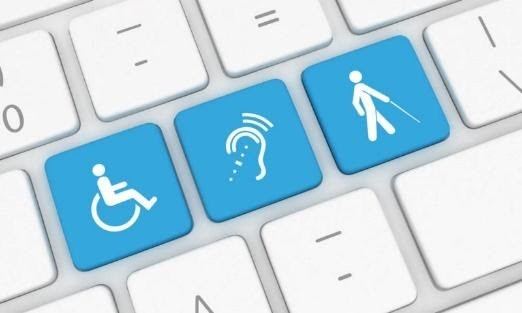The Importance of Accessibility

Why Should We Make Websites Accessible?
Check each of the tabs to learn more.
- The internet has become an important resource in life used for keeping in touch with people, being informed, shopping, and even finding new careers.
- Unfortunately, many people with disabilities currently face a limited and frustrating web experience.
- By making websites accessible, everyone has equal access and opportunities to use online resources.
- Websites that are accessible for everyone, mean more users are capable of using the site.
- There are an estimated 55 million people with a disability in the U.S. alone, and making a website that fails to be accessible, means your excluding a large group of people.
- By making websites accessible, everyone has equal access and opportunities to use online resources.
- Search engines such as Google, use something called Search Engine Optimization or SEO. The practices used to build accessible websites, also helps search engines catalog your content so that your page rank in search results will likely improve. /li
- There are many federal and state laws that require organizations to make their websites and other electronic resources accessible to individuals with disabilities.
- Organizations that have failed to meet accessibility requirements have faced legal actions so the consequences of not making accessibility a priority are potentially severe for the university.
- Texas A&M’s web accessibility regulations, policies, and standards are in place to help the University comply with these laws.
Common Assistive Technologies
Click on the types of technology to learn more.
Basic Tips to Consider For Website Accessibility
Click each of the tabs to learn more.
- Plan a Well-organized, Logical Page Structure Early
- Ensure all content and design fits into a logical heading structure
- Standardize Presentation and Navigation
- Place logos, menus, and other features consistently and predictably.
- Consider Reading Order
- The reading order should be the same as the visual order.
- Provide Good Contrast
- Be especially careful with light shades of gray, orange, and yellow. Avoid backgrounds that obscure text.
- Use True Text Whenever Possible
- Only use graphical text (i.e., an image of text content) when absolutely necessary. True text enlarges better, loads faster, and is easier to translate.
- Consider Line Length and Line Height
- Don’t make lines too long or too short, because it can make text more difficult to read. People tend prefer relatively narrow columns of text, rather than wide columns that stretch across the whole page. The amount of space between lines (i.e., line height) should generally be no less than half the character height.
- Watch the Use of Caps
- All caps can be difficult to read and can be read incorrectly by screen readers
- Use Legible Font Families
- Use standard serif and sans-serif font families. Specialty, stylized fonts (e.g., script fonts) can be difficult to read, especially for low-vision users.
- Use Adequate Font Size
- Font size can vary based on the font chosen, but 10 point is usually a minimum. Developers will define font size relatively, so keep in mind that a user may decide to increase the size of text on the website.
- Make Sure Links are Recognizable
- Use consistent link styles that are easily identified from other text. Differentiate links in the body of the page with underlines or something other than color alone.
- Design Link Focus Indicators
- Ensure keyboard users can visually identify a focused link. Use the standard dotted line or other non-color designators.
- Ensure Link Text Makes Sense
- Avoid “Click Here” in link text. Other ambiguous links, such as “More” or “Continue”, can also be confusing. Strive for links that make sense when read out of context.
- Make Sure Links are Recognizable
- Use consistent link styles that are easily identified from other text. Differentiate links in the body of the page with underlines or something other than color alone.
- Design Link Focus Indicators
- Ensure keyboard users can visually identify a focused link. Use the standard dotted line or other non-color designators.
- Ensure Link Text Makes Sense
- Avoid “Click Here” in link text. Other ambiguous links, such as “More” or “Continue”, can also be confusing. Strive for links that make sense when read out of context.
- Provide a “Skip to Main Content” Link
- A link should be at the top of the page that will allow keyboard users to skip content that’s repeated across web pages (e.g., the site name/logo and primary navigation links). It can be hidden but should be visible when it receives keyboard focus.
- Design Accessible Form Controls
- Ensure form controls have descriptive labels and instructions. Make sure validation errors are written clearly and are helpful.
- Use True Text Whenever Possible
- Only use graphical text (i.e., an image of text content) when absolutely necessary. True text enlarges better, loads faster, and is easier to translate.
- Use Animation, Video, and Audio Carefully
- If used, provide a play/pause button. Avoid content that bounces, spins, twists, or just moves without being vital to or illustrative of your content. Avoid flashing/blinking content, in particular, as it can cause seizures.
- Alt Text
- Ensure Media and Graphics either includes descriptive Alt Text or is marked as Decorative Only

